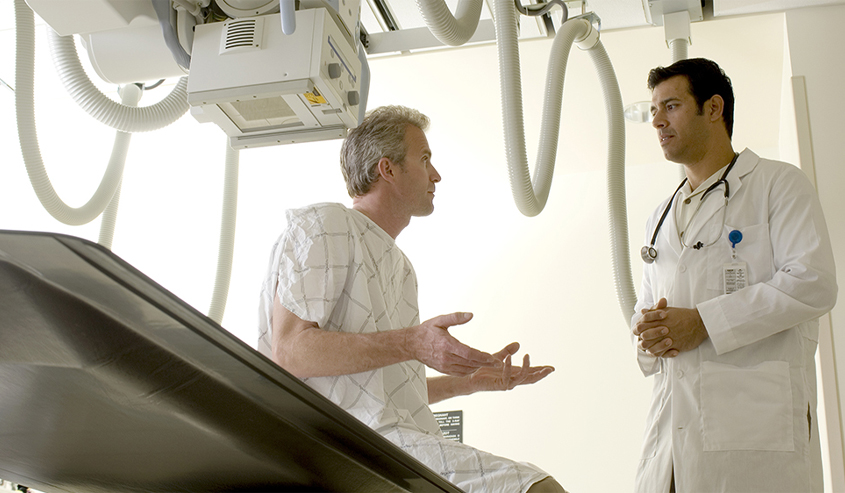
Prior to the initiation of diagnostic imaging, the only way a physician could determine when a person had osteoporosis was if they had broken a bone and fit the disease demographic criteria. Today, the diagnostic imaging technology we use at Vital Imaging makes it possible for our radiologists and technicians to determine if you are suffering from this condition whether you’ve broken any bones or not.
The terminology “bone density scans” is more commonly known in medical circles as “bone densitometry” or “DXA (dual-energy X-ray absorptiometry)” scans. These scans use X-ray imaging to determine if a person has developed osteoporosis. The following content will give a better idea of what bone density scans are, why they are performed, and who needs them.
What is a Bone Density Scan?
According to medical dictionaries and other sources that discuss medical terminologies, bone density scanning is “an enhanced form of x-ray technology that measures bone loss.” Vital Imaging radiologists utilize bone density scans to determine the amount of calcium and other minerals found in specific sections of bone. Furthermore, they examine images of hips, spine, and occasionally the forearms which are the most common areas that are prone to fractures in osteoporosis.
What is the Purpose of a Bone Density Scan?
The primary reason for performing these scans is to determine the amount of bone density reduction that ultimately leads to fractures and osteoporosis. It can also help to determine a person’s risk of suffering from broken bones. Most importantly, bone density scans can help your doctor manage and monitor the osteoporosis treatment plan. The earlier the problem is diagnosed the better it is for you.
When do You need a Bone Density Scan?
Osteoporosis often begins to develop in women when they reach 50 years of age. But even though women are four times as likely to develop the condition as men, older men can develop it as well. Here are three reasons why your physician or radiologist may recommend getting a bone density scan:
- you’ve been taking certain medications whose long-term use can lead to developing the condition
- you’ve broken bones
- you’ve lost height or shrunk
At Vital Imaging, a bone density scan is brief and usually takes 10 to 30 minutes to complete. Furthermore, these scans typically focus on those bones that are prone to fracturing when you have osteoporosis, such as the femur, hip bones, the forearm and the lower section of the spinal column. For more information regarding bone density scans, contact Vital Imaging today. With a team of experienced staff, Vital Imaging would be able to help you get the best treatment, after a your diagnosis.
